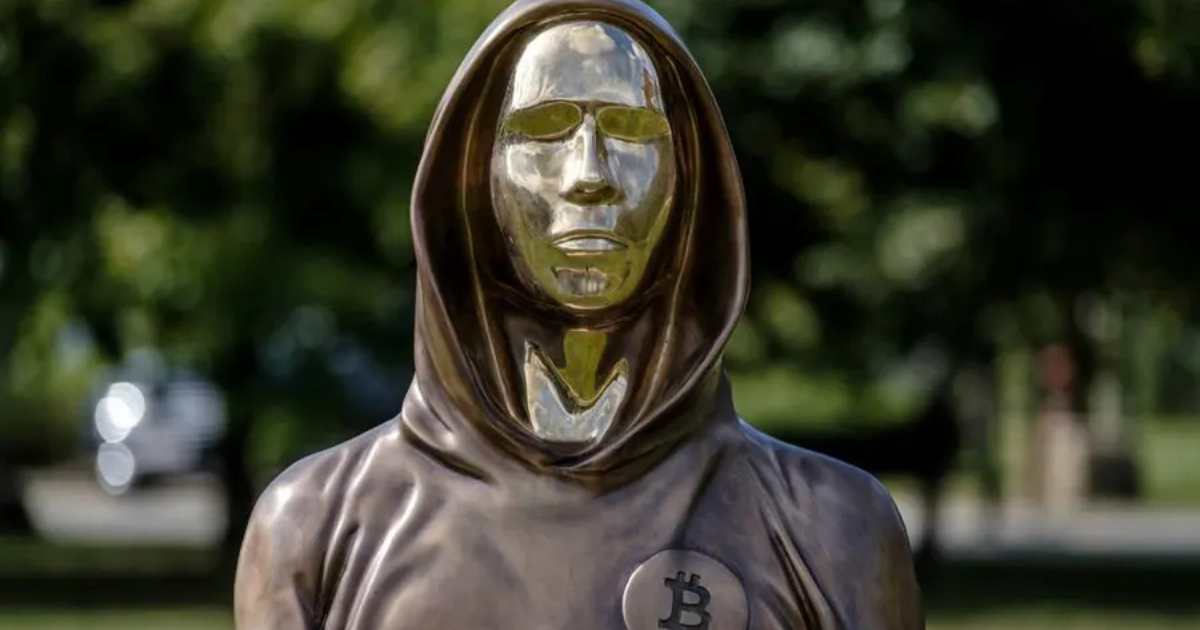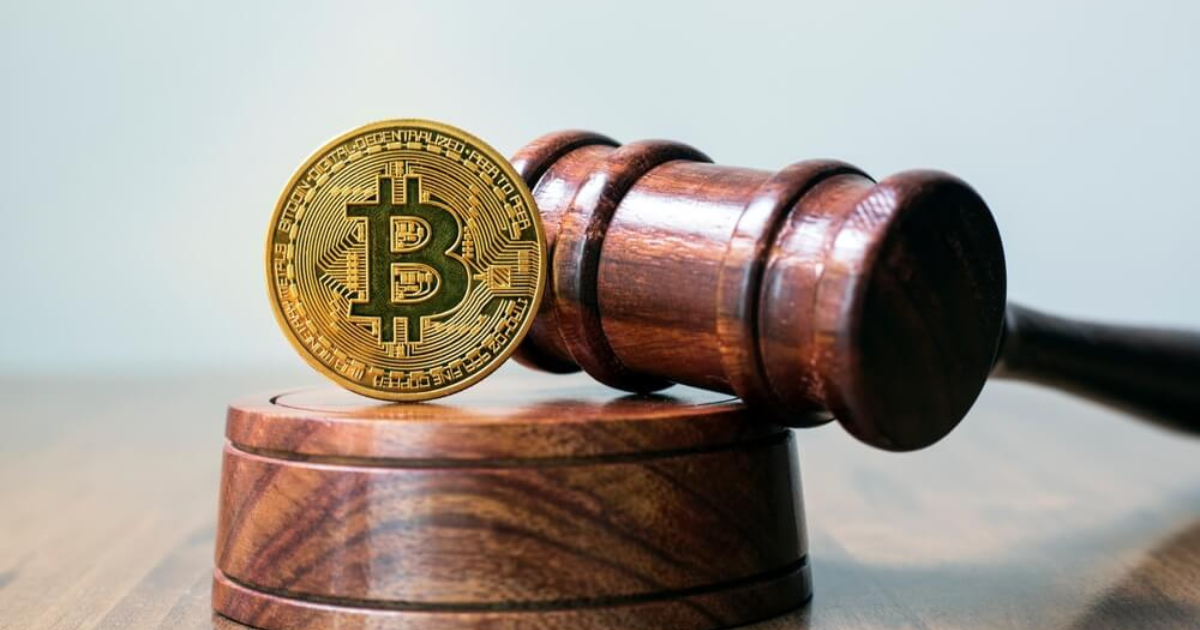As the Bitcoin creator’s identity remains a mystery, an attorney going by the name of James Murphy or ‘MetaLawMan’ is suing the US Department of Homeland Security (DHS). The D.C. District Court lawsuit asks the DHS to provide information about the creator of Bitcoin.
This is the latest attempt at finding out who is behind the pseudonym Satoshi Nakamoto, as Bitcoin was created in 2009 and the person behind the name that built it remained a mystery.
Key-Takeaways:
- The mystery has gripped enthusiasts for a decade, but James Murphy is suing the DHS to get its hands on the Bitcoin creator’s identity.
- Murphy, however, supports transparency, and the reasoning’s critics contend that knowing who Satoshi is is a threat to Bitcoin’s decentralization and could increase their safety risks.
Claims Made About Bitcoin Creator Identity
 For its part, the DHS alleges that the suit stems from remarkable claims made by Special Agent Rana Saoud during a presentation at the OffshoreAlert Conference North America in Miami in April 2019. Saoud says the guys who created Bitcoin had met with DHS agents already.
For its part, the DHS alleges that the suit stems from remarkable claims made by Special Agent Rana Saoud during a presentation at the OffshoreAlert Conference North America in Miami in April 2019. Saoud says the guys who created Bitcoin had met with DHS agents already.
“The agents flew to California and then realized, Oh, he was not the only one creating this there were three more, they sat down and talked to them, and asked how this actually works and why this happened,” the agent stated.
And this revelation implies that Bitcoin’s creation was not by one person, like many people think, but rather by four people.
In particular, Murphy is suing under his Freedom of Information Act; he claims to want “notes, email, and other documents related to that alleged interview.” If such a document exists, it would be a huge breakthrough in the decade-old quest to identify Bitcoin’s creator.
The Great Mystery of the 21st Century–Who is Bitcoin Creator “Satoshi Nakamoto?”
The United States Government claims to know the answer–but isn’t talking.
So, today I sued the U.S. Government to find out exactly what it knows.
🧵👇
— MetaLawMan (@MetaLawMan) April 7, 2025
But Murphy concedes that ‘Saoud and the other DHS agents may have been mistaken and Saoud and the other DHS agents may have not talked to the real Satoshi Nakamoto.’
Motivations Behind Seeking Bitcoin Creator’s Identity
 Murphy believes that it is in the interest of the public to understand more about Bitcoin’s creator and thinks that the identity can be revealed with the release of greater transparency on the digital currency. Knowing this would be a good step towards an open and informed society, he thinks.
Murphy believes that it is in the interest of the public to understand more about Bitcoin’s creator and thinks that the identity can be revealed with the release of greater transparency on the digital currency. Knowing this would be a good step towards an open and informed society, he thinks.
In his interviews, Murphy drew comparisons to other blockchain projects. “Every one of the largest blockchain project creators’ (i.e. Charles Hoskinson and Vitalik Buterin, etc) identities are pretty much known in the crypto community.”
On top of that, he explained that government transparency is “a fundamental aspect of our freedom in the USA.” If government employees know who created Bitcoin, Murphy thinks that the public should, too.
He also hoped that the government transparency commitment of the Trump administration would make it possible for the government to voluntarily disclose. “My hope is that Secretary Noem will take advantage of this opportunity and voluntarily share this information,” he said.
In his comments, Murphy was referring to DHS Secretary Kristi Noem.He still wants to go all the way to the bitter end with the litigation.
Former Assistant US Attorney Brian Field, who deals with Freedom of Information Act litigation, will be helping him.
According to Murphy, discovering the Bitcoin creator’s identity may help adoption. When these folks are new to bitcoin, what I find is that audiences often struggle with the idea that the creator of bitcoin is anonymous while the provenance of the other major crypto projects is (relatively) visible.
He also endorsed “President Trump’s efforts to stabilize a strategic Bitcoin Reserve and a Digital Asset Budget.”
Referring to this initiative as a beginning of making the crypto space more transparent and legitimate, Murphy sees this as a step forward.
In the quest to unmask Satoshi Nakamoto, the Bitcoin community has split in two. Some enthusiasts crave to track down Bitcoin creator’s identity, others are concerned with what possible outcomes might come as a by-product of a revelation like this.
Unmasking Satoshi would compromise Bitcoin’s decentralization, which is a bedrock of the cryptocurrency and cast a negative light on its technological revolution-of-freedom pitch.
Also, giving away the identity of the Bitcoin creator is a legitimate safety matter. In fact, last year HBO’s ‘Money Electric: The Bitcoin Mystery’ was published, a documentary making the outrageous claim that it had found Nakamoto, who was none other than Bitcoin core developer Peter Todd.
But Todd vehemently denied that these were true and criticized the filmmakers for irresponsibility. He brought up how such claims could put his personal safety on the line.
Other names associated with Satoshi Nakamoto are Spink, Nick Szabo, Adam Back and the late Hal Finney. Nevertheless, Szabo and Back constantly deny being Satoshi and so did Finney before his death in 2013. Although it has the involvement of numerous investigations and theories, one cannot confirm the identity of the Bitcoin creator.
Murphy emphasises safety issues, because most of the Bitcoin rich in the world like Michael Saylor and Tim Draper have public identities and are not known victims of attacks or thefts.
Secondly, he argues that Bitcoin’s code is open source, so it operates under a community consensus mechanism and the Bitcoin Improvement Proposal (BIP) procedure, and Satoshi (if they or he were found) would have no ability to unilaterally commit changes to bitcoin.
Therefore, Murphy states that any disclosure of Satoshi’s identity is unlikely to damage Bitcoin.
Conclusion
Murphy’s lawsuit is the latest attempt by the crypto world to solve the mystery of the Bitcoin creator’s identity. As with all legal action, it may or may not reveal Satoshi Nakamoto or bring another chapter to end the saga. Is this legal action set to uncover Satoshi Nakamoto?











